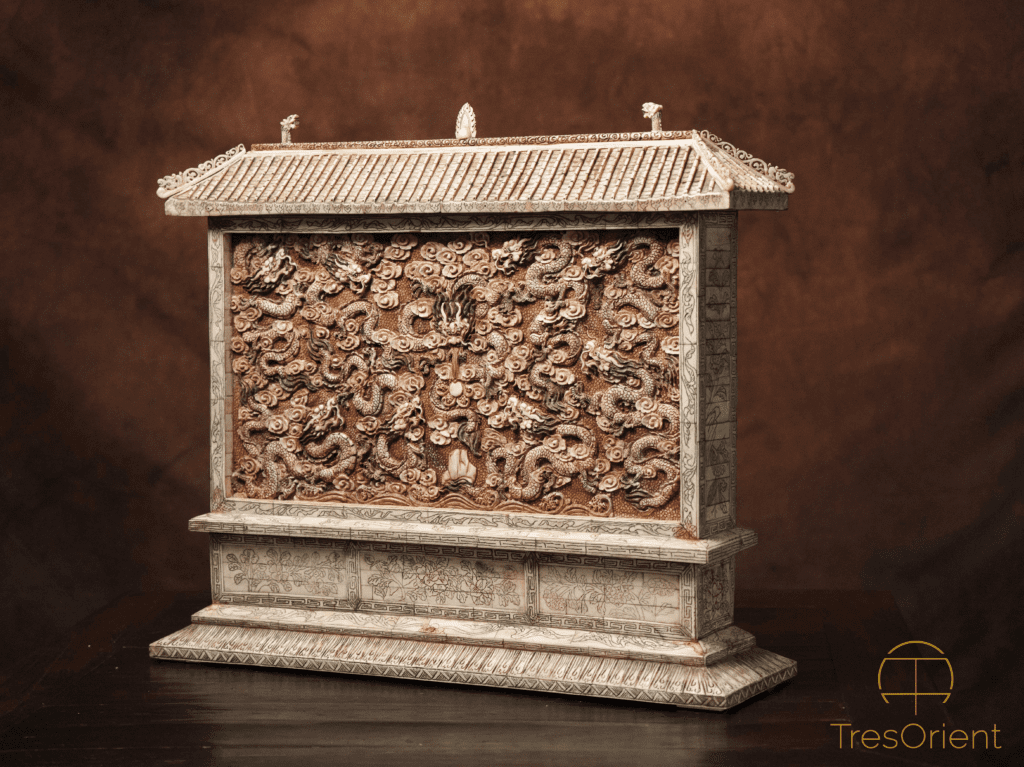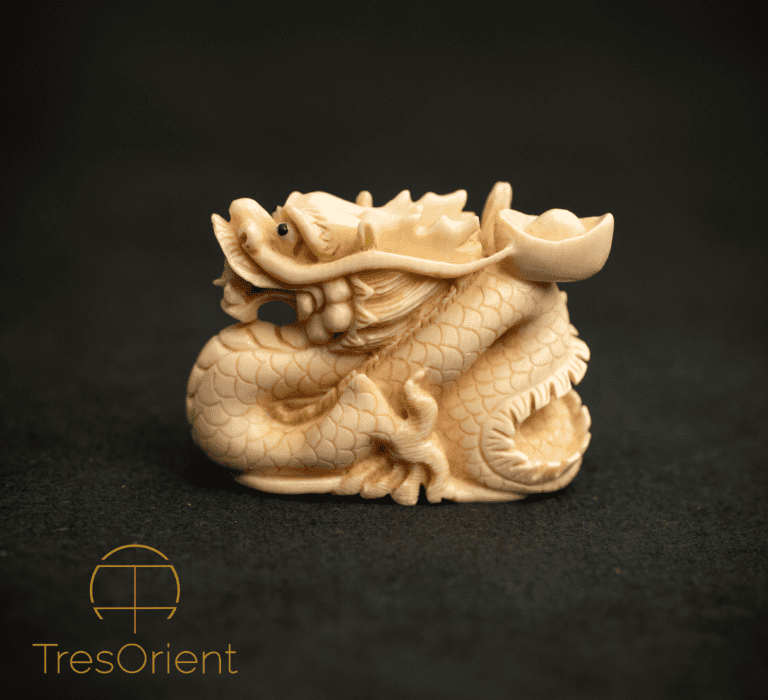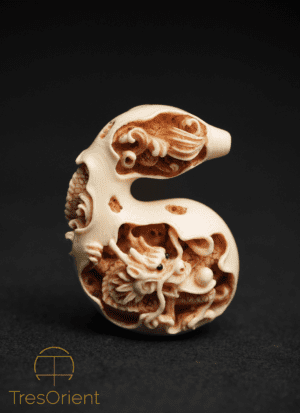The Western Dragon and the Chinese Dragon
The dragon or the Loong: creatures less extraordinary than they seem.
During the Middle Ages, the West represented the dragon as an evil beast. Saint Michael, Saint George slaying the dragon. However, a closer look reveals that these dragons are akin to a « super snake » with wings that spit fire and blood.
The tempting serpent of Genesis, which, according to the Bible, incited mankind – or rather, woman – to disobedience towards God and led to original sin, is certainly at the origin of this bad reputation.
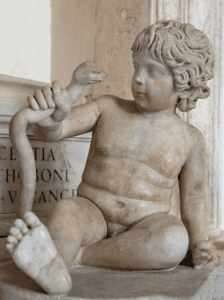
Hercules Strangling a Serpent
Marble, Roman artwork from the 2nd century AD
Capitoline Museums – Rome
In ancient Greece, the snake also had a negative connotation, as evidenced by the Gorgons and the Hydra of Lerna. The sculpture « Lacoon and his sons » dramatically illustrates the ruthless cruelty of this animal. We also recall the tale of Hera’s jealousy when she sends a snake to kill her husband’s illegitimate son. Fortunately, Heracles strangled the animal from his cradle, and our hero of ancient times was able to carry out his 12 works of public health for the good of mankind.
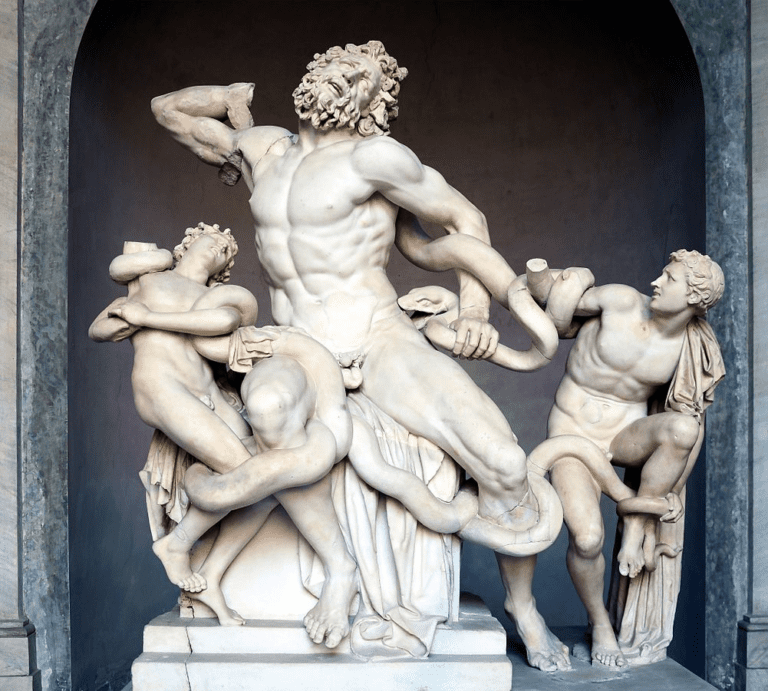
Laocoön and His Sons
40 BCE
Pio-Clementino Museum, Rome (Vatican)
A few thoughts on the Loong.
In contrast, the Chinese dragon, or Loong (龍) , has a more complex ancestry. The result of a 1000-year gestation or incubation period and a 3000-year metamorphosis, it is a composite of very real animals: tiger, deer, horse, eagle, fish and snake. It’s the work of a skilled geneticist or an extraordinary philosopher!
It is the symbol of mastered nature, water, sky, power…
Endowed with so many qualities, the Chinese claim to be descendants of the Loong. All Chinese are cousins!
The Loong also had 9 children. They’re all fantastic; protectors with different qualities and defects:
- Qiúniú (囚牛), loves music, found on many stringed instruments.
- Yázì (睚眦) has a bad temper, found on antique weapons.
- Cháofēng (嘲风) is fearless, likes to take risks and can be found on the corner of many imperial buildings.
- Púláo (蒲牢) loves to roar; when he encounters the reat whale, he roars with fear, and is found on bells in particular.
- Suān’ní (狻猊) resembles a lion, found on the feet of censers or as a protector in front of doors.
- Bìxì (s:赑屃/t:贔屭) resembles a turtle, he has great strength and can carry very heavy things, he also loves writing. He is often found carrying tall stelae with texts.
- Bì’àn (狴犴) resembles a tiger, he is wise and can determine who is good and who is evil, he appears in prisons and courts.
- Fùxì (s:负屃/t:負屭) loves literature, is depicted on tablets with long texts and sometimes on seals.
- Chīwěn (螭吻) or Chīwěi (鸱尾) has a carp body and a dragon head, and is found at the corner of roofs, protecting against fires.
- Bìxì (s:赑屃/t:贔屭) resembles a turtle, he has great strength and can carry very heavy things, he also loves writing. He is often found carrying tall stelae with texts.
- Bì’àn (狴犴) resembles a tiger, he is wise and can determine who is good and who is evil, he appears in prisons and courts.
- Fùxì (s:负屃/t:負屭) loves literature, is depicted on tablets with long texts and sometimes on seals.
- Chīwěn (螭吻) or Chīwěi (鸱尾) has a carp body and a dragon head, and is found at the corner of roofs, protecting against fires.
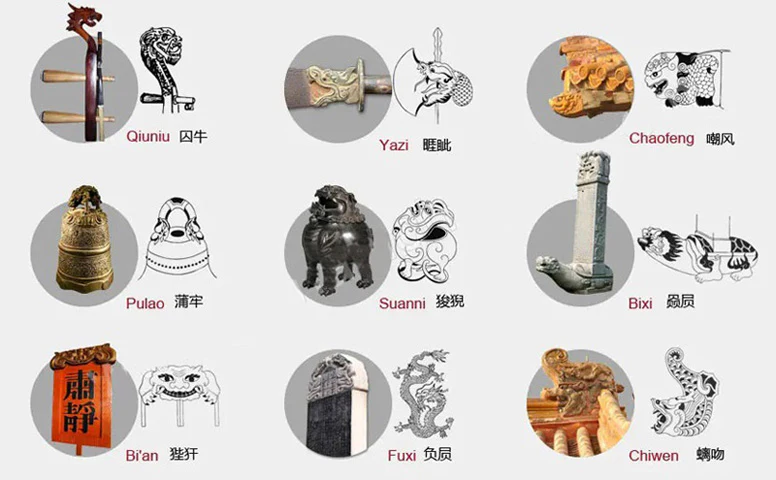
The 9 Children of Loong
He has offspring, and therefore a family. The Loong becomes more human…
So we can say that the evil Western dragon is not the Loong. They are two different creatures.
Interestingly, the Loong is made up of different animals, each with distinct qualities. It is the aggregation of the qualities of different animals that makes it possible to obtain a superior being. This is a philosophical message.
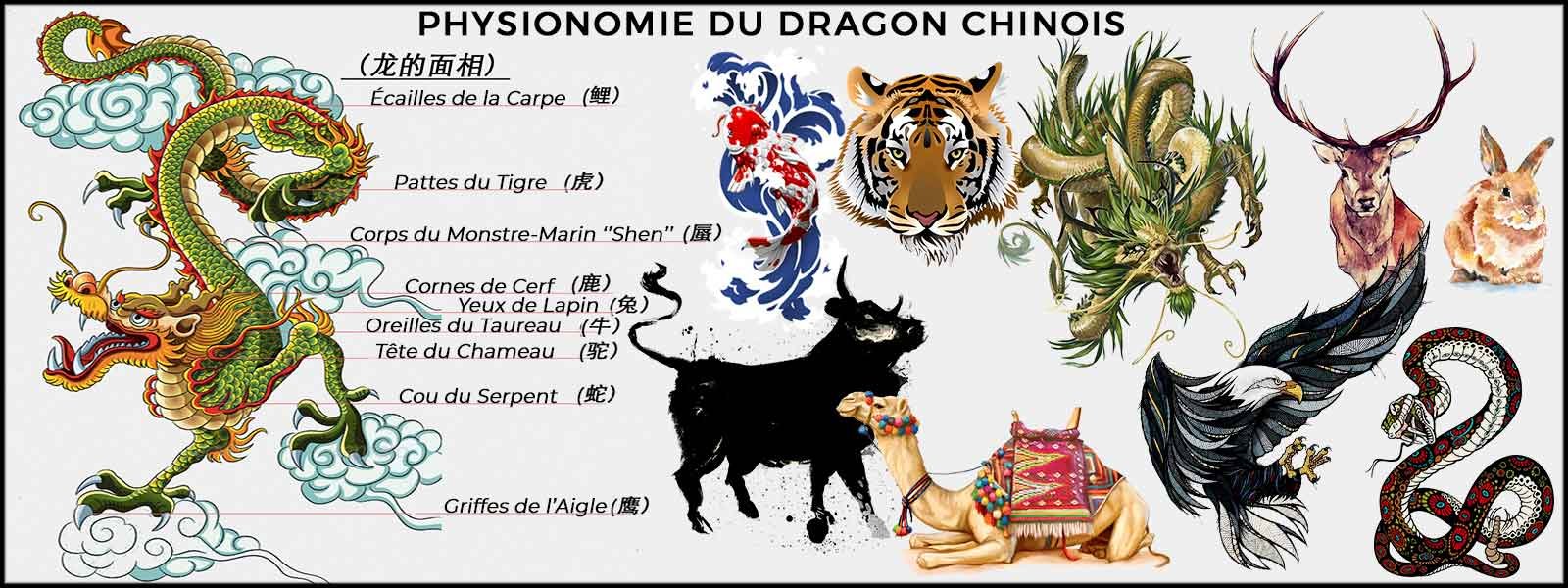
The construction of this mythical Loong began several millennia ago, expressing the worldview and beings of ancient Confucian China. Time, family, and the gathering of individual qualities are used to create this extraordinary, almost perfect creature.
The Chinese have made the term Loong their own in everyday life.
Loong is also chosen as a first name for children. The national hero, actor Bruce Lee, is in fact called Lee « the little dragon ». Kowloon in Hong Kong means « 9 dragons ». He long Jian (Black Dragon River) is a large river located in northern China and is also a very large northern province that will be a pole of economic development in the coming years.
Finally, Loong is one of the 12 zodiac signs of the Chinese horoscope. Horses, rabbits, roosters, goats, pigs, oxen and dogs – all domestic animals – rub shoulders with wild beasts such as snakes, tigers, rats and monkeys. In this areopagus of well-known animals, the Loong appears almost incongruously.
Few explanations have been put forward to explain this extraordinary presence among 11 such ordinary animals.
A final consideration: Loong is also the Chinese homophone for « deaf (聾)« . Loong, having 5 claws, represents the Emperor of China and is pronounced as deaf! Coincidence of senile old Chinese philosophers? How could the Emperors of China have allowed this confusion to continue?
Although questions remain…Chinese philosophy deserves serious study.
Sculptures Associated with Dragons
